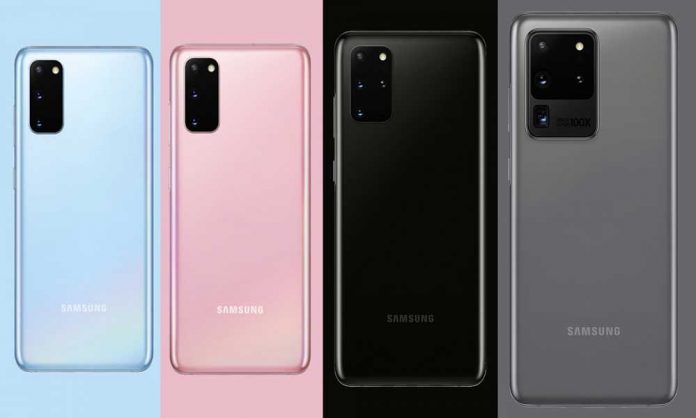Samsung had unveiled its new Galaxy S20 lineup a new successor of Galaxy S Series, which offers a camera setup with larger sensors, 5G support across all variants, and a screen with a better refresh rate, among other changes. These are the features differentiate the lineup from last year’s Galaxy S10 — and Apple’s latest iPhones.
It’s worth noting, however, that Samsung’s phones are costlier than Apple’s. The Galaxy S20 starts at $1,000, while the iPhone 11 begins at $700. The larger Galaxy S20 Plus begins at $1,200, and its even larger sibling, the S20 Ultra, costs a minimum of $1,400. The iPhone 11 Pro starts at $1,000, and therefore the 11 Pro Max begins at $1,100.
Here’s a better check up on a number of the features found on Samsung’s Galaxy S20 that are missing from the iPhone.
Larger Screens
Samsung’s new phones all offer larger screens than Apple’s iPhone 11 family.
Realme C3 teaser revealed in Pakistan, entry-level smartphones featuring Helio G70
The Galaxy S20 contains a 6.2-inch screen, while the Galaxy S20 Plus includes a 6.7-inch display and also the Galaxy S20 Ultra features a 6.9-inch screen.
The iPhone 11 features a 6.1-inch display, while the iPhone 11 Pro features a 5.8-inch screen and the iPhone 11 Pro Max features a 6.5-inch display.
Notch Less Display
Starting with the iPhone X in 2017, Apple replaced the normal bezel with a “notch” cutout just above the screen to supply space for the iPhone’s front-facing camera and facial-recognition sensors. Two years later, the iPhone 11 and iPhone 11 Pro still have that very same notch.
But Samsung has taken a special approach with its Galaxy S20 phones and last year’s Galaxy S10. Those phones have a smaller cutout that resembles a hole punch; Samsung calls it an “Infinity-O” display.
High-Res Camera Sensors
The cameras on Samsung’s new phones also are much different from those on Apple’s.
The Galaxy S20 and S20 Plus have camera systems that contains a 12-megapixel ultra-wide-angle camera, a 12-megapixel wide-angle camera, and a 64-megapixel telephoto camera. The Plus model features a fourth camera for depth sensing.
But it is the Ultra model’s camera that basically stands out. The high-end model comes with a 108-megapixel wide-angle camera, a 48-megapixel telephoto camera, a 12-megapixel ultra-wide-angle camera, and a depth-sensing camera. Samsung also says the 108 megapixels on the Ultra can group to make a bigger 12-megapixel sensor which will absorb more light.
The iPhone 11 features a dual 12-megapixel camera with a wide-angle lens and an ultra-wide-angle lens, while the professional models have triple-camera systems with a further 12-megapixel telephoto camera.
Samsung’s Galaxy S20 Ultra also features a higher-resolution 40-megapixel selfie camera, while the opposite two models have a 10-megapixel front-facing camera. The iPhone features a 12-megapixel selfie camera.
Better Zooming Quality
In addition to having higher-resolution sensors than Apple’s iPhones, the Galaxy S20’s camera can zoom in further than the iPhone 11 and 11 Pro’s cameras.
The Galaxy S20 and S20 Plus have an optical zoom of up to 3X and a digital zoom of up to 30X, while the Galaxy S20 Ultra has an optical zoom of up to 10X and a digital zoom of up to 100X.
The iPhone 11 features a digital zoom of 5X, while the iPhone 11 Pro features a 2X optical zoom and a 10X digital zoom.
Multiple Picture Modes
It’s not just the camera hardware that Samsung changed with its Galaxy S20. Samsung added a feature called “single take,” which captures video clips and stills in multiple formats with one press of the shutter button.
The iPhone doesn’t have this specific feature, but the iPhone 11 and 11 Pro do have a feature called QuickTake that allows you to shoot a video without switching out of photo mode.
More Storage Space
The base model of Samsung’s newest devices comes with 128 GB of storage, whereas the entry-level iPhone 11 and 11 Pro have 64 GB of onboard space.
5G Network
All of Samsung’s new smartphones support 5G connectivity, but the less costly Galaxy S20 can connect only to slower mid-band networks. The Galaxy S20 Plus and S20 Ultra, on the opposite hand, support superfast millimeter-wave 5G networks, though the downside is that these speedier networks do not have long ranges.
None of Apple’s latest iPhones supports 5G, but that would change this year, because the company’s iPhone 12 lineup is predicted to support the next-generation network.
Still, it’s worth noting that 5G networks have yet to mature within the USA. Networks from Verizon, AT&T, and Sprint are available during a few cities across the country, and even in those cities the network is typically available only in select areas. T-Mobile’s 5G network is out there across the country, but only in select areas.
120Hz Display
You can boost the Galaxy S20, S20 Plus, and S20 Ultra’s screen refresh rate up to 120Hz, while most smartphones’ refresh rate is 60Hz.
Boosting the refresh rate should make navigating the OS and scrolling feel smoother and more natural. Apple’s iPad Pro models can refresh at 120Hz through a feature Samsung Mobile calls ProMotion, but this hasn’t made its way to the iPhone.
On-Screen Fingerprint Sensor
Apple axed the fingerprint sensor in favor of Face ID when it killed the home button in 2017 with the iPhone X. And it hasn’t brought it back.
Samsung’s Galaxy S20 devices and last year’s Galaxy S10 devices (excluding the S10e) each have a fingerprint sensor embedded within the display, giving users the selection to unlock their device through a fingerprint or face recognition.
Apple’s newer smartphones, including the iPhone 11 and 11 Pro, support only face recognition .
Reverse wireless charging
Samsung’s Galaxy S20 lineup, also as its older Galaxy S10 phones, can wirelessly charge other devices by resting them on the phone’s back.
There were rumors that Apple was getting to bring this feature to the iPhone 11 lineup, but no such feature exists on the iPhone.



























